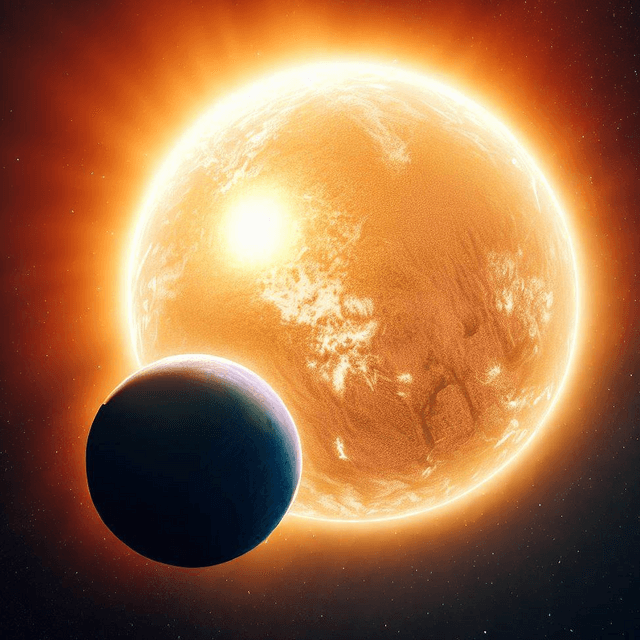
How Many Earths Fit Across the Sun?
Easy

In this project, you will make a large model of the Sun and the Earth to explore how much bigger the Sun is compared to our planet.
Hypothesis
The hypothesis of this experiment is that the Sun is much bigger than the Earth.
Method & Materials
You will mark a circle on the floor to represent the Sun and use stickers to represent Earth. By counting how many Earths fit across the Sun, you will see just how big it is!
You will need blue stickers, masking tape, a pen or pencil, and yellow paper with "Sun" written on it.
Results
In conclusion, this experiment shows that the Sun is much bigger than the Earth, and approximately 110 Earths can fit across it. The observation that stands out is that the Sun is incredibly massive compared to the Earth.
Why do this project?
This science project is interesting because it allows you to explore the size of the Sun in a hands-on and visual way. It is unique because it uses stickers and tape to create a large-scale model.
Also Consider
Instead of using stickers, try using small balls to represent the Earth. Use different colors of stickers or balls to represent other planets in the solar system.
Full project details
You can find additional information and details for this science fair project here. Have fun exploring!Share this Science Project:
Related Science Fair Project Ideas
Explore our solar system with Play-doh! Make a scale model of planets and moons and learn about their size and distance from each other.
Easy
Build a mini version of our solar system with planets made from play dough or foil and a balloon sun. Discover the wonders of space!
Easy
Explore the solar system with fruits! Pick which fruit represents each planet based on their size, then order them according to their distances from the sun.
Easy
Share this Science Project:
